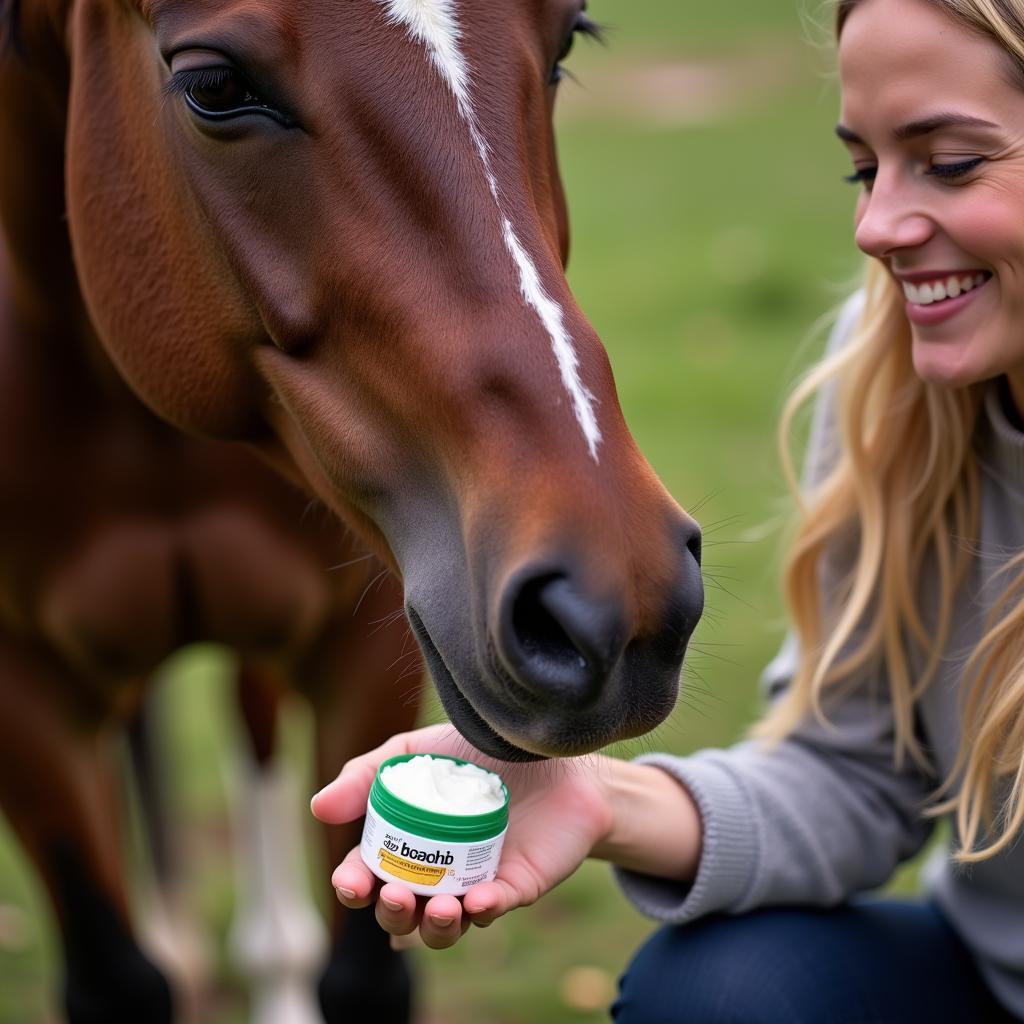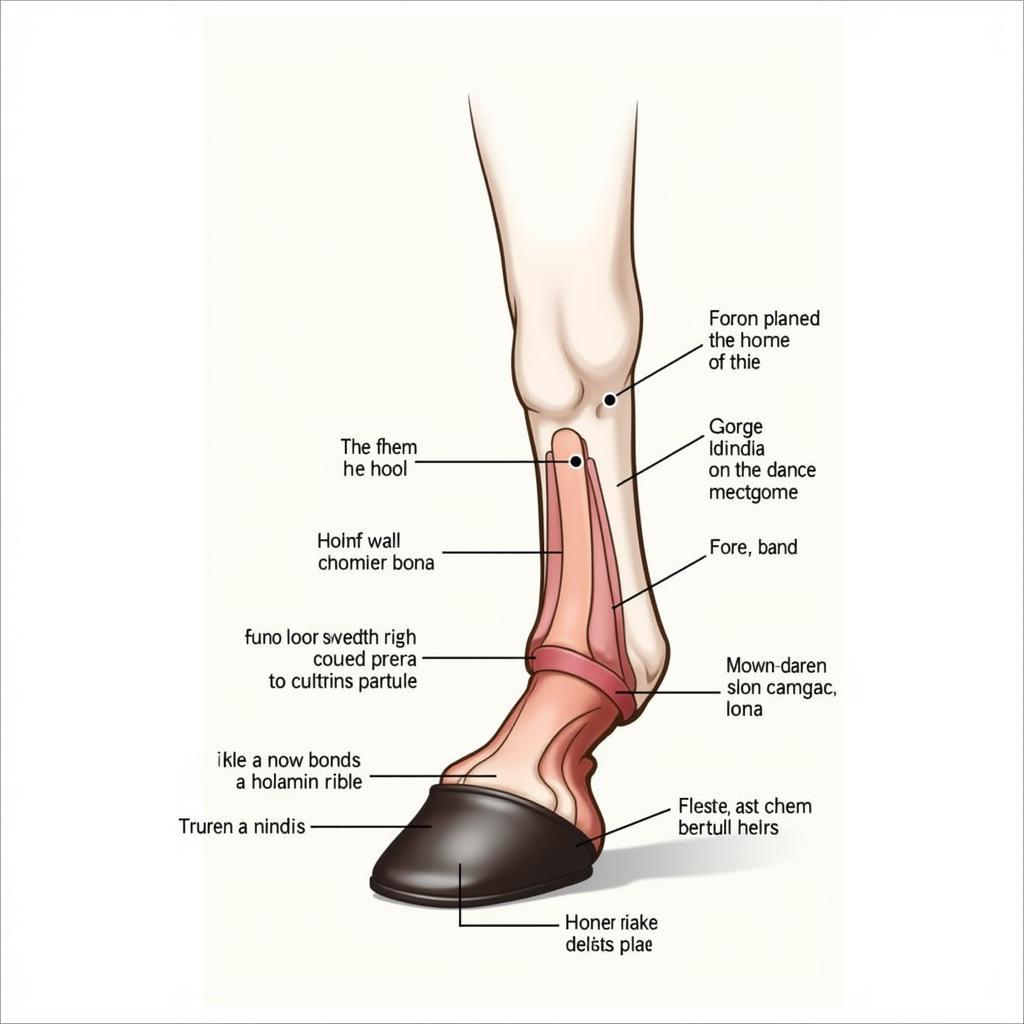Lixotinic For Horses is a popular supplement known for its potential to support hoof health. But what exactly is lixotinic, and how does it work? This comprehensive guide dives deep into the world of lixotinic, exploring its benefits, uses, and important considerations for horse owners.
What is Lixotinic for Horses?
Lixotinic is a palatable, biotin-based supplement formulated to promote healthy hoof growth in horses. Often available in a molasses-flavored paste or pellet form, it’s designed to be appealing to horses, making administration easier for owners.
 Horse receiving lixotinic supplement
Horse receiving lixotinic supplement
The Science Behind Lixotinic: How Does it Work?
The key ingredient in lixotinic is biotin, a B-vitamin crucial for various metabolic processes in the body, including hoof growth. Biotin helps in the formation of keratin, the protein that makes up the hoof wall. A deficiency in biotin can lead to weak, brittle hooves prone to cracking, chipping, and slow growth.
Lixotinic often incorporates other beneficial ingredients, such as:
- Methionine and Lysine: Essential amino acids that are the building blocks of protein and are vital for hoof horn production.
- Zinc and Copper: Trace minerals that play a role in enzyme activity and keratin formation.
- Vitamins and Minerals: Additional vitamins and minerals further support overall health and well-being, contributing to optimal hoof condition.
 Horse hoof anatomy diagram
Horse hoof anatomy diagram
When Should You Consider Lixotinic for Your Horse?
Lixotinic can be beneficial in various situations:
- Horses with Poor Hoof Quality: If your horse has dry, brittle, cracked, or slow-growing hooves, lixotinic may help improve hoof integrity and growth rate.
- Horses in Training or Competition: These horses often place additional stress on their hooves. Lixotinic can help maintain hoof strength and resilience.
- Horses Recovering from Hoof Issues: Following an abscess, injury, or disease, lixotinic can support the healing process and promote healthy new hoof growth.
- Horses with Nutritional Deficiencies: If your horse’s diet lacks sufficient biotin or other essential nutrients for hoof health, lixotinic can bridge the gap.
How to Administer Lixotinic to Your Horse
Always follow the manufacturer’s instructions on the product label. Dosage recommendations may vary depending on the specific lixotinic product and your horse’s weight.
Tips for Easy Administration:
- Paste Form: Many horses find the molasses flavor appealing. You can typically apply the paste directly onto the back of the horse’s tongue using the provided syringe or measure.
- Pellet Form: Mix the pellets with your horse’s regular feed. Start with a smaller amount to ensure your horse accepts the taste and gradually increase to the recommended dosage.
Consult Your Veterinarian
While lixotinic is generally considered safe, it’s crucial to consult with your veterinarian before starting any new supplement regimen for your horse. They can:
- Assess Your Horse’s Hoof Condition: Your veterinarian can determine if lixotinic is appropriate based on your horse’s specific needs.
- Rule Out Underlying Issues: Hoof problems can sometimes indicate underlying health conditions. Your veterinarian can perform a thorough examination to rule out any other medical reasons for poor hoof quality.
- Recommend the Right Dosage: They can advise on the appropriate dosage of lixotinic for your horse’s weight and condition.
Conclusion
Lixotinic can be a valuable tool for horse owners looking to support their horses’ hoof health. By providing essential nutrients like biotin, lixotinic aids in maintaining strong, resilient hooves, contributing to your horse’s overall well-being and soundness. Remember, always consult your veterinarian to determine the best course of action for your equine companion.
For personalized advice and support in caring for your horse’s needs, contact Justus Horses USA at 0772127271 or email us at [email protected]. Our expert team is available 24/7 to assist you. You can also visit our facility located at QGM2+WX2, Vị Trung, Vị Thuỷ, Hậu Giang, Việt Nam.